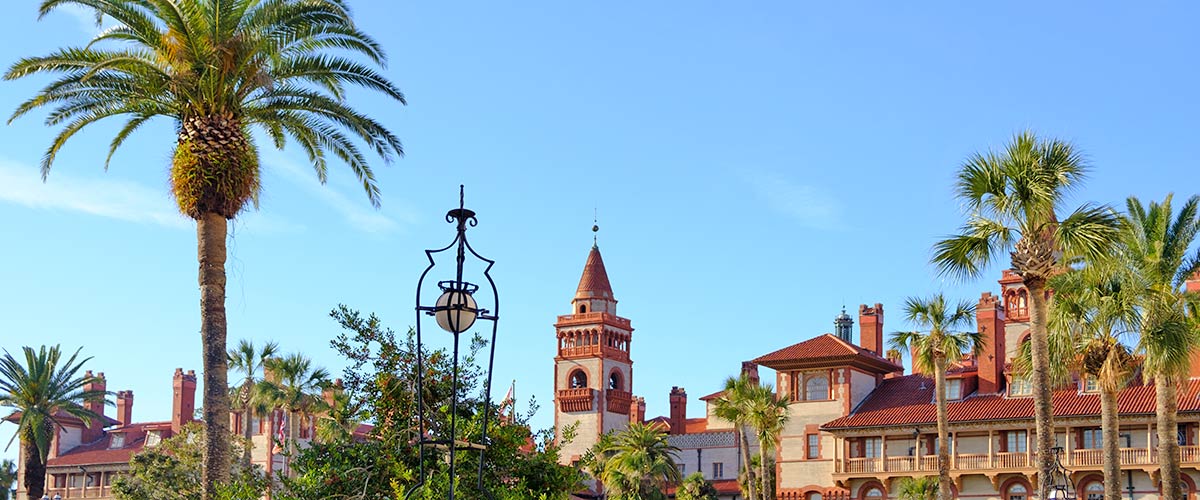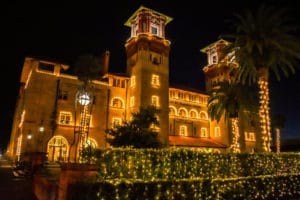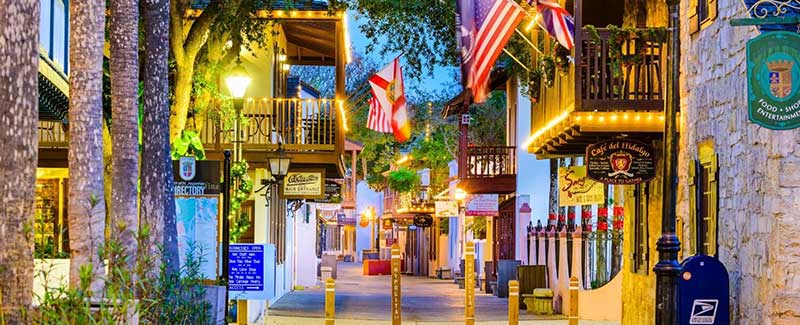St. Augustine, Fla. (Jan. 24, 2014) — St. Augustine holds a unique place in the history of African-Americans in North America as the location of the first legally sanctioned free African-American town in the nation. And from the time Spanish explorers stepped onto the shore of Florida, Africans had a place among the adventurous crew and among the earliest settlers.
St Augustine is celebrating African-American History month in February by telling the story of its role in history with a comprehensive exhibit called Journey: 450 Years of the African- American Experience along with a series of events in February and throughout the year.
African-American heritage in the United States begins 450 years ago when blacks, both free and enslaved, were among the 800 colonists who established the St. Augustine settlement under the leadership of Spanish explorer Admiral Pedro Menendez de Aviles. From St. Augustine’s earliest days through the turbulent 1960s, African-Americans have played key roles in the development of both the city and nation. This vital contribution by people of color is well-documented, but not well-known. That is about to change.
Journey: 450 Years of the African-American Experience tells the fascinating story of blacks who helped settle the nation with original documents and artifacts, interviews, photos, art and more. The
Journey exhibition is designed for cultural and heritage visitors interested in the full history of America and its beginnings and comprises four themes: Genesis of the African-American Experience; Fortress of Freedom; Breaking the Chains; and Crossroads of Change.

Among the fascinating and rarely seen artifacts in theJourney exhibit is the first known birth certificate of an African-American child, born in St. Augustine in 1595. A marriage certificate is also on display, a historic record that documents the earliest known marriage between two African-Americans in St. Augustine in 1598. The lunch counter of the local Woolworth’s, where four young people made history in a 1963 protest, is on display along with photos that tell the story of the “St. Augustine Four.” Perhaps the most compelling artifact is the arrest record and fingerprint card for Martin Luther King Jr., who was arrested in peaceful protest in 1964. St Augustine is the only Florida location in which Dr. King was arrested.
Journey is located inside the St Augustine Visitors Information Center and runs through July 15. The exhibit is open daily from 9 a.m. to 5 p.m. Tickets are $5 for adults; $4 for seniors; $3 for youth 7-12; under 7 free.
www.Journey2014.com.
Why St. Augustine?
What makes St Augustine different from other U.S. destinations is the experiences of free blacks. In 1738 in Spanish Florida, former slaves escaping their English masters founded Gracia Real de Santa Teresa de Mose, a settlement charter by Florida’s Spanish Governor, which is today known as Fort Mose. Fort Mose became the first legally sanctioned free African settlement in the United States and was viewed as a sanctuary for Africans from English slavery. Today, Fort Mose Historic State Park is located three miles north of St. Augustine’s city gate.
Blacks in Florida had very different experiences under Spanish rather than British rule.
Under Spanish rule:
- Some blacks were free and some were not. Slavery was based on religion, not color. Not all Spanish slaves were African and not all Africans were slaves.
- Free blacks competed with whites for jobs.
- Slaves were entitled to earn wages and had protection from mistreatment by their owners.
- African were able to retain and practice their native customs and these cultural traditions were embedded in the first colony, creating a richly blended multicultural society.
Under British rule:
- Thousands of enslaved Africans faced starvation, torture and even death on their journey to the Americas on The Middle Passage.
- Blacks worked in a fast-growing plantation economy.
- Enslaved Africans were forced into labor and endured brutal punishments.
- Blacks had no legal standing and virtually no rights.
In addition to Fort Mose, the city played other significant roles in the history of African-Americans.
Freed at the end of the Civil War, former local slaves created the Lincolnville district of St. Augustine-an area that has been added to the National Register of Historic Places.
In 1963 and 1964, Civil Rights demonstrations in St. Augustine and the violent attempts to stop them gained national and international media attention. In St. Augustine’s Plaza de la Constitucion, the Andrew Young Crossing commemorates the June 9, 1964, Civil Rights march led by Young and there is a monument dedicated to the St. Augustine Foot Soldiers who participated in the Civil Rights Movement.
In recognition of February as African-American History month, several events will take place in St. Augustine. Click
here to download a list of events.
Located midway between Daytona Beach and Jacksonville, Florida’s Historic Coast includes historic St. Augustine, the outstanding golf and seaside elegance of Ponte Vedra and 42 miles of pristine, Atlantic beaches. For more information on events, activities, holiday getaway and vacation opportunities in St. Augustine, Ponte Vedra & The Beaches, go to the Visitors and Convention Bureau website at
www.FloridasHistoricCoast.com, become a fan on Facebook or call 1.800.653.2489.







